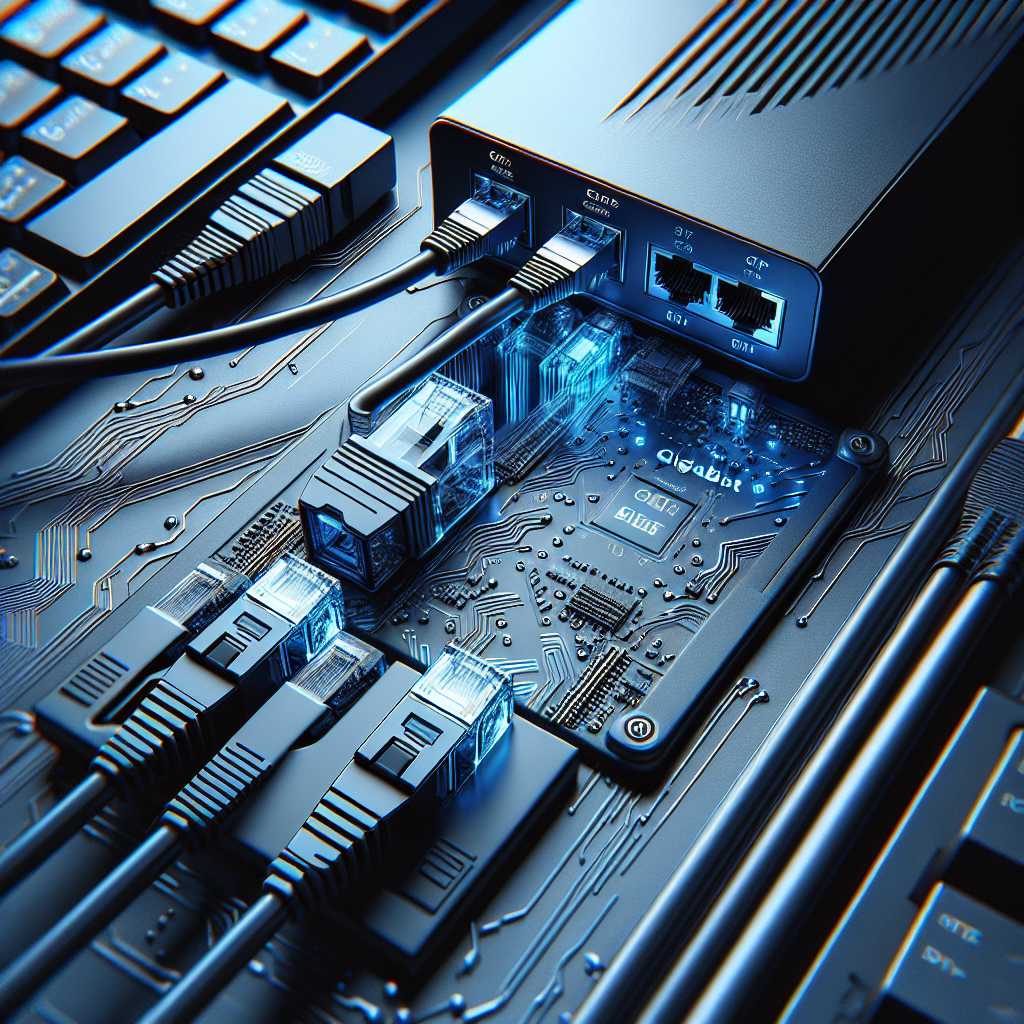Understanding Ethernet Splitters in Gigabit Networks
In the dynamic world of networking, understanding the proper use and function of devices such as Ethernet splitters is vital for maintaining high-speed performance. One common query is whether an Ethernet splitter can be utilized within a gigabit network. To determine this, it’s essential to delve into the mechanics of both Ethernet splitters and gigabit networks.
What is an Ethernet Splitter?
An Ethernet splitter is a device that takes a single Ethernet cable and divides it into two separate connections. It is often used when there’s a need to connect multiple devices to a single Ethernet port. However, it’s important to note that Ethernet splitters do not multiply the bandwidth. Instead, they share the bandwidth between the connected devices, which can lead to reduced speeds if not used correctly.
What is a Gigabit Network?
A gigabit network refers to a network that can support data transfer rates of up to 1,000 megabits per second (Mbps) or 1 gigabit per second (Gbps). This type of network is becoming standard in many homes and businesses due to its ability to handle high-speed data transfer required for modern applications such as streaming, gaming, and large file transfers.
Do Ethernet Splitters Work with Gigabit Networks?
To assess whether Ethernet splitters can be effectively used in gigabit networks, it’s helpful to compare the characteristics and requirements of both.
| Feature | Ethernet Splitter | Gigabit Network |
|---|---|---|
| Bandwidth | Shares bandwidth between devices | Up to 1 Gbps |
| Data Transfer Rate | Potentially reduced due to shared use | High-speed up to 1 Gbps |
| Recommended Use | Low bandwidth tasks | High-speed, high bandwidth applications |
Impact of Ethernet Splitters on Gigabit Networks
While Ethernet splitters can technically be used with gigabit networks, they significantly impact the network’s performance. Here are some considerations:
- Bandwidth Sharing: Ethernet splitters divide the single line’s bandwidth between two connections. In a gigabit network, this can mean that each device might only receive up to 500 Mbps, effectively reducing the network’s speed.
- Interference: Splitters might introduce noise and interference, further degrading performance in a high-speed network.
- Complexity: Adding splitters can complicate the network setup, leading to potential troubleshooting challenges.
Advantages and Disadvantages of Using Ethernet Splitters
Advantages
- Cost-Effective: Ethernet splitters are generally inexpensive, making them a budget-friendly option for basic connectivity needs.
- Simplicity: They are easy to use and require no additional power source or special configuration.
Disadvantages
- Reduced Speed: The primary drawback is the potential reduction in network speed, especially in high-demand scenarios typical in gigabit networks.
- Limited Functionality: Splitters do not expand your network’s capabilities; they only divide an existing signal.
- Potential for Signal Degradation: The signal quality can deteriorate over long distances or with multiple splitters in the network.
Alternative Solutions to Ethernet Splitters
Considering the downsides of Ethernet splitters, other solutions might be better suited for gigabit networks:
Ethernet Switches
Ethernet switches are often a better option for gigabit networks. Unlike splitters, switches can effectively manage and distribute data across multiple devices without significantly impacting speed or bandwidth.
- Increased Speed: Ethernet switches can handle high-speed data transfers, making them ideal for gigabit networks.
- Enhanced Management: Switches manage the flow of data packets efficiently, reducing the chance of bottlenecks and congestion.
- Scalability: Switches allow for easy expansion of the network, supporting numerous devices simultaneously.
Powerline Adapters
Another alternative is using powerline adapters, which use your electrical wiring to extend the network connection. They provide a stable, high-speed connection suitable for gigabit networks.
- Convenience: Powerline adapters can be plugged into any electrical outlet, simplifying complex network setups.
- Performance: They offer reliable and fast connections, often capable of supporting gigabit speeds.
Wi-Fi Extenders and Mesh Systems
For wireless solutions, Wi-Fi extenders or mesh systems can extend the network’s range and maintain high-speed connections over larger areas.
- Flexibility: These systems offer flexible placement and can cover wide areas without the need for extensive cabling.
- Consistent Speeds: Modern Wi-Fi extenders and mesh systems are designed to support high-speed connections, suitable for gigabit networks.
Conclusion
In conclusion, while it’s possible to use an Ethernet splitter within a gigabit network, it is not the most efficient solution. Splitters can greatly reduce network speed and introduce potential complications. For those looking to maintain the full benefits and speed of a gigabit network, alternatives like Ethernet switches, powerline adapters, and Wi-Fi extenders provide more reliable and effective solutions. By carefully considering your network’s needs and the performance requirements of your devices, you can choose the best option to ensure a high-speed, efficient networking experience.
